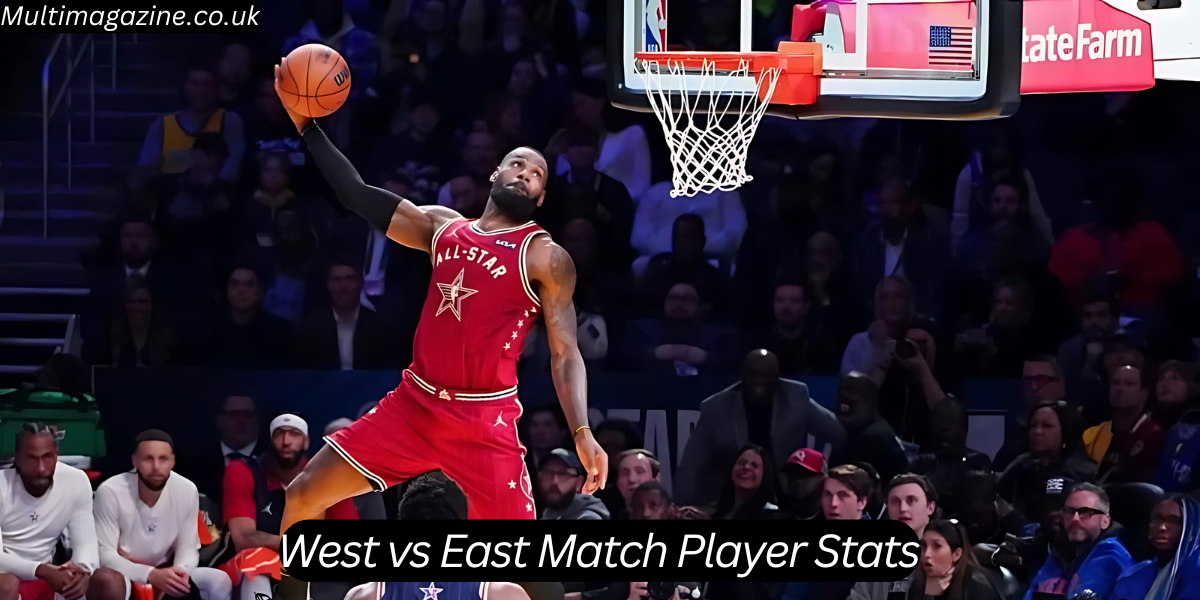The rivalry between the Western and Eastern regions in various sports and games is a captivating topic that draws attention from fans and analysts alike. Whether in basketball, tennis, or esports, comparing player statistics from the West and East provides insights into their competitive strengths and dynamics. This article will explore the player stats from both regions in depth, offering a detailed analysis of how these statistics influence performance and contribute to the ongoing rivalry.
The West vs East debate is a staple of competitive sports and gaming, fueling discussions about which region holds the upper hand. This rivalry is not just a matter of historical success but involves current performance metrics, evolving strategies, and emerging talents. Analyzing player stats from both regions can reveal trends, strengths, and areas for improvement, providing a nuanced understanding of the competitive landscape.
In this comprehensive analysis, we will dive into various metrics, historical performance, and current trends to offer a well-rounded view of the West vs East match player stats. We will examine key statistics in basketball, tennis, and esports, exploring how these figures shape the rivalry and impact the overall competitive scene.
Key Metrics for Player Stats
To effectively compare player stats from the West and East, we need to focus on key metrics that offer a clear picture of performance. These metrics vary depending on the sport or game, but they all provide valuable insights into players’ abilities and contributions.
Basketball
Points Per Game (PPG)
Points Per Game (PPG) is a fundamental metric in basketball, reflecting a player’s scoring ability. This statistic is crucial for assessing offensive performance and impact on the game. For instance, LeBron James, a Western Conference player, has consistently been a top scorer with an average of over 27 PPG throughout his career. His scoring prowess and versatility make him one of the greatest players in NBA history.
In contrast, Eastern Conference star Giannis Antetokounmpo has also demonstrated exceptional scoring ability. Known for his athleticism and driving skills, Antetokounmpo has averaged around 22 PPG. His scoring is complemented by his ability to contribute in other areas, such as rebounds and assists, making him a well-rounded player.
Assists Per Game (APG)
Assists Per Game (APG) measures a player’s ability to facilitate scoring opportunities for teammates. This statistic is vital for evaluating playmaking and teamwork. Russell Westbrook, a notable Western Conference player, has been recognized for his high APG, often averaging around 7 assists per game. His aggressive style of play and ability to drive to the basket create numerous scoring opportunities for his teammates.
On the other hand, Eastern Conference player Trae Young excels in playmaking, with an average of approximately 9 APG in recent seasons. Young’s vision and passing skills are crucial to his team’s offensive success, and his ability to create shots for his teammates makes him a valuable asset.
Tennis
Serve Speed
In tennis, serve speed is a key factor in a player’s performance, influencing their ability to win points off the serve. Novak Djokovic, a prominent Eastern Conference player, is known for his powerful serve, often reaching speeds exceeding 130 mph. His serve is a critical component of his game, allowing him to set up offensive plays and put pressure on his opponents.
Western Conference player Rafael Nadal, while known more for his consistency and spin, also possesses an impressive serve. Nadal’s serve speed is competitive, and his ability to place the serve accurately helps him gain an advantage in matches. His game is characterized by a relentless playing style and exceptional groundstrokes.
Winning Percentage on Hard Courts
Winning percentage on hard courts is another important statistic in tennis, reflecting a player’s performance on a specific surface. Eastern player Daniil Medvedev has shown strong performances on hard courts, with a winning percentage exceeding 70%. His aggressive baseline game and adaptability make him a formidable opponent on this surface.
Western player Roger Federer has also excelled on hard courts, boasting a winning percentage similar to Medvedev’s throughout his career. Federer’s smooth play and versatility enable him to adapt to various surfaces, contributing to his overall success in tennis.
Esports
Kill/Death Ratio (K/D)
In esports, Kill/Death Ratio (K/D) is a crucial metric for assessing a player’s effectiveness in first-person shooters. Western player Shroud, known for his exceptional skills, has achieved high K/D ratios, often exceeding 2.0. His precision, reflexes, and strategic gameplay make him a standout performer in competitive esports.
Eastern player xQc also demonstrates strong performance metrics, with a K/D ratio that reflects his skill and competitiveness. xQc’s dynamic playstyle and adaptability in various game modes contribute to his high K/D ratio and overall success in esports.
Match Win Rate
Match win rate is another vital statistic in esports, indicating a player’s success rate in matches. Eastern teams, such as those from China and South Korea, have often outperformed their Western counterparts in international tournaments. For example, the Chinese team Invictus Gaming won the League of Legends World Championship in 2018, showcasing their dominance in the esports arena.
Western teams, like Team Liquid and Cloud9, have also achieved notable success, demonstrating their competitive edge and skill. The balance between Eastern and Western teams continues to evolve, with each region making significant contributions to the global esports scene.
Historical Performance: West vs East
Analyzing historical performance data provides valuable context for understanding the West vs East rivalry. Examining past successes and trends can shed light on current dynamics and future prospects.
NBA: A Historical Perspective

The NBA has long been a battleground for the West vs East rivalry. Historically, the Western Conference has enjoyed a period of dominance, with teams like the Los Angeles Lakers and Golden State Warriors achieving significant success. The Lakers, with their 17 NBA championships, and the Warriors, with 7 titles, have been dominant forces in the league.
However, the Eastern Conference has also made its mark, with teams like the Boston Celtics and Chicago Bulls achieving success. The Celtics, with their 17 championships, and the Bulls, led by Michael Jordan, who secured 6 titles in the 1990s, have been significant contributors to the Eastern Conference’s legacy.
In recent years, the balance of power has shifted, with Eastern teams like the Milwaukee Bucks emerging as dominant forces. Giannis Antetokounmpo’s impressive performances have led the Bucks to NBA Championship glory, showcasing the growing competitiveness of the Eastern Conference.
Tennis: The Rise of Eastern Players
The rise of Eastern players in tennis has been a notable trend in recent years. Eastern players like Novak Djokovic and Maria Sharapova have achieved remarkable success on the ATP and WTA tours. Djokovic’s Grand Slam victories and Sharapova’s major titles highlight the strength of Eastern players in the sport.
Western players, such as Roger Federer and Serena Williams, have also enjoyed considerable success. Federer’s record 20 Grand Slam titles and Williams’ 23 major titles reflect the ongoing competitiveness between Western and Eastern players. The rivalry continues to drive the sport, with emerging talents from both regions shaping its future.
Esports: The Competitive Landscape
In esports, the West vs East rivalry has been particularly prominent in games like League of Legends and Dota 2. Eastern teams from regions like China and South Korea have often outperformed their Western counterparts in international tournaments. For example, the Chinese team Invictus Gaming won the League of Legends World Championship in 2018, while the South Korean team SK Telecom T1 achieved multiple victories in previous years.
Western teams, such as Team Liquid and Cloud9, have also made significant strides in the esports arena. Their performances in various tournaments showcase their skill and competitiveness. The balance between Eastern and Western teams remains dynamic, with each region continually adapting and evolving.
Current Trends and Future Outlook
As we move into the current era, several trends and factors are shaping the West vs East rivalry across different sports and games.
NBA: The Changing Landscape
In the NBA, recent years have seen a shift in power dynamics between the Western and Eastern Conferences. Teams like the Milwaukee Bucks, led by Giannis Antetokounmpo, have emerged as dominant forces in the Eastern Conference. The Bucks’ success reflects the increasing competitiveness of the East and the ability of Eastern teams to challenge the traditional dominance of the West.
The Western Conference remains highly competitive, with teams like the Phoenix Suns and Denver Nuggets making significant strides. The Suns’ rise to prominence and the Nuggets’ recent championship victory highlight the ongoing strength and competitiveness of the Western Conference.
Tennis: The Rise of New Stars
In tennis, the emergence of new stars from both the Western and Eastern regions is shaping the sport’s future. Young players like Carlos Alcaraz from Spain (Western) and Jannik Sinner from Italy (Eastern) are making their mark on the ATP Tour. Alcaraz’s explosive performances and Sinner’s impressive skills indicate a bright future for tennis, with competition between emerging talents driving the sport’s evolution.
The continued success of established players like Novak Djokovic and Roger Federer, combined with the rise of new stars, creates an exciting and dynamic competitive environment. The balance between Eastern and Western players will likely continue to influence the sport’s landscape.
Esports: Global Competition and Innovation
In the world of esports, global competition and innovation continue to drive the West vs East rivalry. New games and evolving strategies are influencing performance metrics and competitive balance. The rise of new titles and the development of innovative gameplay techniques contribute to the ever-changing dynamics of the esports scene.
Eastern teams’ dominance in games like League of Legends and Dota 2, combined with Western teams’ achievements in other esports genres, creates a diverse and competitive landscape. As esports grows in popularity, the ongoing competition between Eastern and Western players will continue to shape the industry’s future.
For More Information Visit: Multi Magazine
Conclusion
The West vs East match player stats offer a fascinating glimpse into the competitive landscape of various sports and games. By analyzing key metrics, historical performance, and current trends, we gain valuable insights into the strengths and dynamics of both regions.
While historical data and current trends provide context, it’s essential to recognize the dynamic nature of competition. The ongoing rivalry between the Western and Eastern regions drives innovation, performance, and excitement in sports and esports.
As we look to the future, the West vs East rivalry will undoubtedly continue to captivate fans and analysts. With emerging talents, evolving strategies, and global competition, the dynamic interplay between these regions promises to keep the world of sports and games engaging and ever-evolving.





